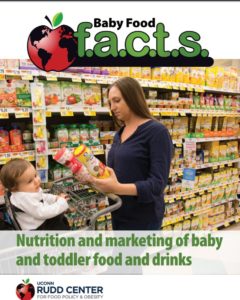FTC goes after Kellogg’s Immunity claim, but why?
The FTC has imposed new advertising restrictions on Kellogg because of the Immunity claim on Rice Krispies. The company is not to make claims about “any health benefit of any food unless the claims are backed by scientific evidence and not misleading.”
Under a previous order dealing with Frosted Mini-Wheats, Kellogg was not supposed to make claims about benefits to cognition on any of its cereals or snack foods unless the company could prove that the claims were backed by real science. This new decision extends that ruling to include any claim at all.
OK, but I’m confused about several aspects of this decision:
- How come the FTC is doing this and not the FDA? At some point years ago, regulatory responsibility was split between FDA and FTC. Since then, the FDA regulates claims on food package labels, whereas the FTC regulates advertising claims. I realize that food labels are a form of advertising, but it’s unusual and surprising for the FTC to get involved in FDA-regulated matters.
- As FoodNavigator also wonders, why didn’t the FTC fine the company and, instead, write a harsh letter? [see update below]
- Why is the FTC doing this? Kellogg agreed months ago to withdraw its Immunity claim ( see my November 5 post about the withdrawal). The Immunity boxes gradually disappeared from supermarket shelves and I haven’t seen one for a long time.
So what’s going on here? Is the FTC getting serious about regulation (and about time, too)? Or is FDA sitting back and letting the FTC do its enforcement work?
Could this be why the FDA hasn’t sent a warning letter to Mead-Johnson, the maker of the chocolate toddler formula with three health claims aimed at kids ages 1 to 3. I posted about this product on April 26, but haven’t heard whether the FDA is doing anything about it. Can the FTC be on this case but waiting for investigations to be completed before taking action?
Kellogg, it seems, is under fire on all fronts. CSPI’s Margo Wootan sent me the recent decision by the Children’s Advertising Review Unit of the Better Business Bureau that Kellogg must stop advertising Pop-Tarts to kids:
CARU was concerned that the product packaging, which features berries and states “Made with Real Fruit” for several of Kellogg’s Pop-Tarts® products that have fruit in their names, impliedly represents to children that the products contain substantial amounts of fruit.
In fact, according to CARU, Pop-Tarts contain less than 6% fruit and less than 2% of the fruit shown in the advertising. Kellogg claimed that its marketing was not aimed at kids, but lost that one.
It’s great that regulatory agencies like FTC and FDA (and voluntary agencies like CARU) are regulating but it’s hard to keep track of who is doing what. Nothing to do but wait and see what happens next. Stay tuned.
Update, June 8: CSPI’s Margo Wootan writes that FTC can’t impose fines because it does not have the authority to issue civil penalties. Ted Mermin of Public Good Law concurs. He says:
Companies fight hard to make FTC (and similar) orders as narrow as possible, in large part to avoid precisely the situation in which they are held responsible for violating an existing injunction/order. Since (in the Commission’s view, at least) Kellogg hadn’t violated an existing order, the FTC did not have the authority to fine them without first going to the US Department of Justice to get DOJ to take the case (a matter of a 45 day delay, if DOJ takes it at all). The burden of that delay (and of needing to get authority from DOJ in the first place) is precisely what is driving the congressional charge for enhanced FTC authority as part of the financial reform legislation.
If the House version of financial reform legislation had been in effect, the FTC would have had the authority to seek civil penalties (i.e., fines) and the outcome here might have been different. As it was, the fact that Kellogg had stopped the practice…kept the Commission (at least the three commissioners in the “majority”) from focusing on any remedy other than injunctive relief–that is, a broadening of the existing order from the Mini-Wheats case, with the threat of that $16,000 per violation (and an expanded area of prohibited activity) running into the future.
Update, June 11: In an editorial titled “Snake oil for breakfast,” the New York Times explains why health claims matter so much. If you can’t believe health claims, what part of the food label can you believe?:
Businesses have been making dubious claims about their products at least since the 17th century, when the British clergyman Anthony Daffy sold Daffy’s Elixir as a cure for scurvy as well as agues, gout, rheumatism, rickets, worms and other ailments. Hucksterism — no matter how implausible the claim — lives on…[for example] POM Wonderful claimed its pomegranate juice helps treat, prevent or cure hypertension, diabetes and cancer. This might be par for the course for an era of swift-boating political ads and a torrent of television commercials plumping for myriad wonder drugs (sudden death may result). It leaves the consumer in a quandary: what part of the label can be believed?


